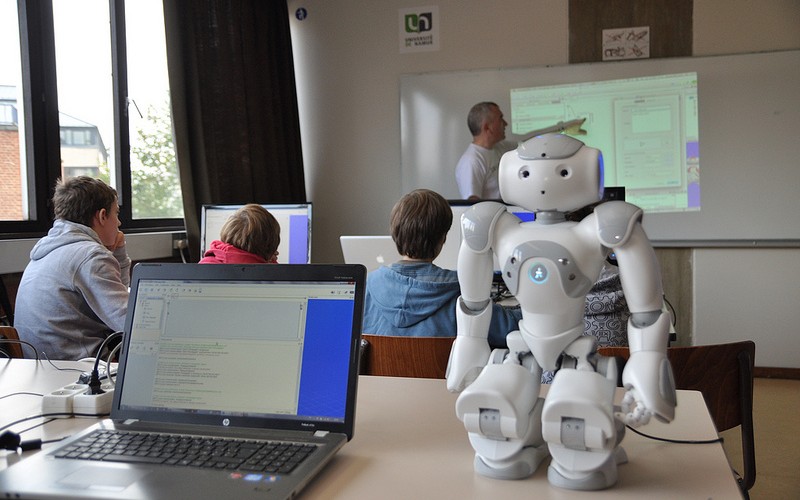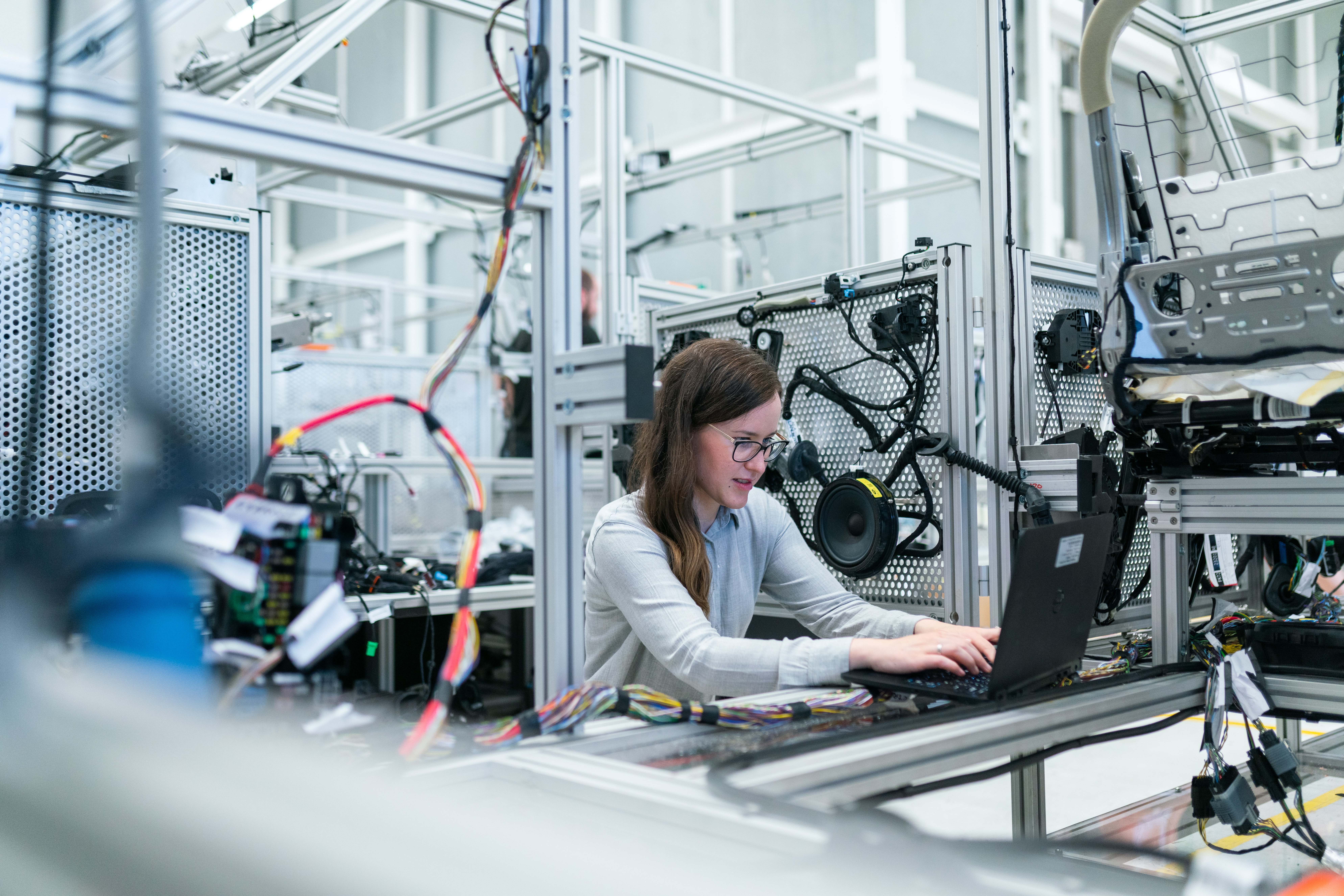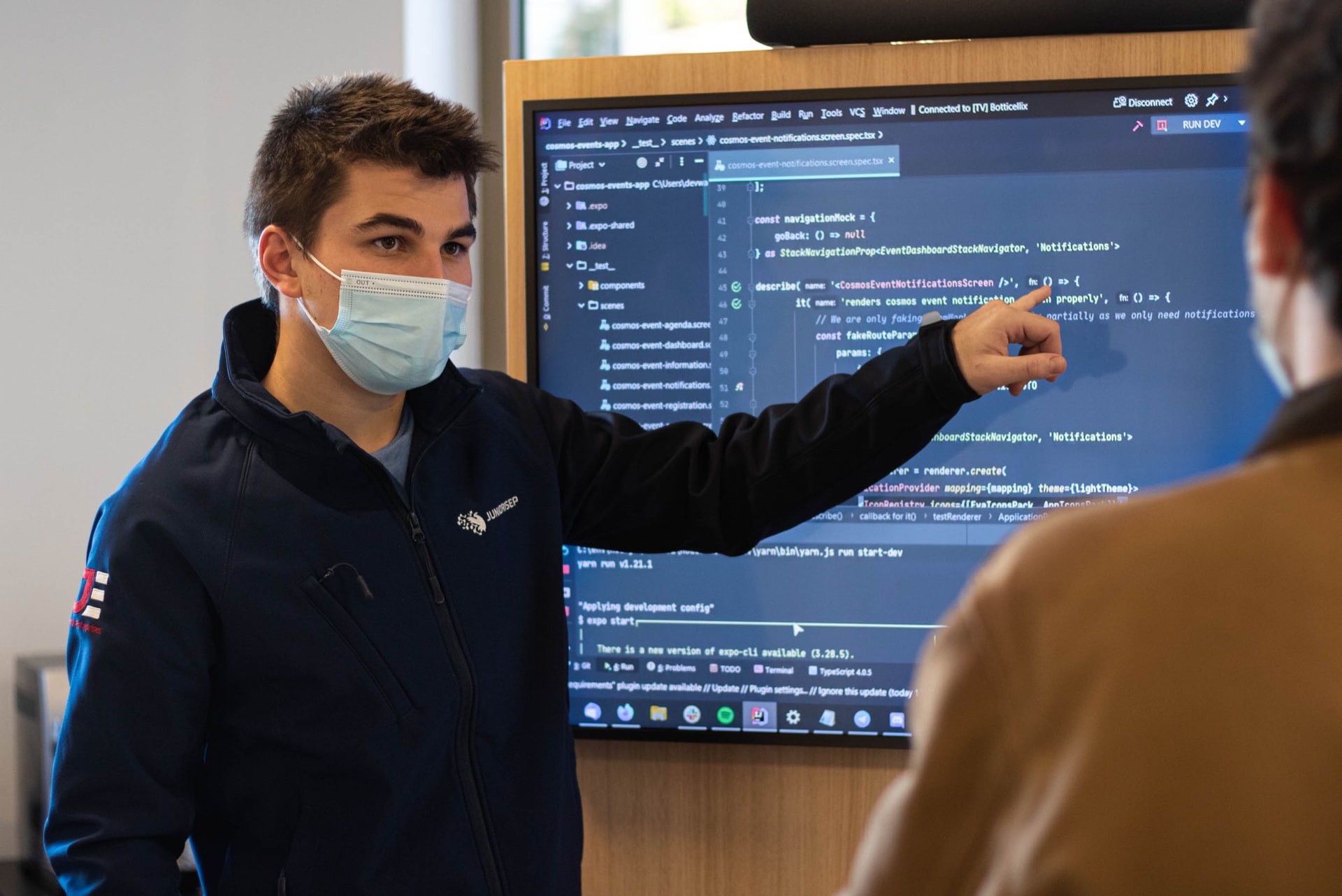How to Use Robots to Assist Teachers and Improve Student Learning?
By Tiffany Harper

Technology has evolved tremendously during the last few years. Even though this progress might have been slowed down by the global pandemic that started last year, developers do not miss the opportunity to do this now. As the coronavirus pandemic made many people more aware of the impact of their behavior and habits on the world, environment, and people, the field of technology is developing even more nowadays. Technology is a general term used for naming the things that are related to computers, robots, artificial intelligence, machine learning, networking, servers, and many more. Technology is not represented only by your smartphone or laptop. Technology is present in our everyday lives more than we are even aware of.
Becoming aware of the impact of technology is step humanity has to make. But becoming aware of the impact technological advancements could have on our lives is something we still have to work on. Technology has been very important for the field of education, especially during the last year. As people had to spend more time inside, colleges and universities have shifted to online learning. Which was a challenge itself, both for students and teachers. However, the future is bright and robots might begin to be used by teachers in classrooms. Why?
Because robots could assist teachers and improve student learning in classrooms, making the job of teachers even easier. Using a robot in the classroom is a nice thing to do, especially at the beginning when many would be reluctant to do this. But as essay writers on technology topics say, robots could indeed make teaching and learning more efficient and successful. How? Find out below.
- 6 Comments
- Jun 8, 2021 10:00:00 AM
- Posted by Natalia Galvis
- Topics: Math, EdTech, STEM, Curriculum, Problem Based Learning (PBL), teachers, students, Technology, PBL, Edchat, Gendergap, Digital Technology, Augmented Reality, teaching, online, virtual learning, lessons
How the Edtech Industry Can Help get Education Back on Track
By Jason Carroll, Chief Product Officer, Texthelp
With an eye on professional development and high-quality instruction, the Edtech industry plays a vital role in post-pandemic education.
- 0 Comments
- Jun 7, 2021 10:00:00 AM
- Posted by Natalia Galvis
- Topics: Math, EdTech, STEM, Curriculum, Problem Based Learning (PBL), teachers, students, Technology, PBL, Edchat, Gendergap, Digital Technology, Augmented Reality, teaching, online, virtual learning, lessons
Bringing Students Together in Math Class
 photo source: https://unsplash.com/
photo source: https://unsplash.com/
For math teachers who will have students learning at home next year, fostering a feeling of community will be as important as building skills.
- 0 Comments
- Jun 3, 2021 10:00:00 AM
- Posted by Natalia Galvis
- Topics: Math, EdTech, STEM, Curriculum, Problem Based Learning (PBL), teachers, students, Technology, PBL, Edchat, Gendergap, Digital Technology, Augmented Reality, teaching, online, virtual learning, lessons
11 Resources To Avoid the Summer Slide
 Photo by Drew Perales on Unsplash
Photo by Drew Perales on Unsplash
Learning loss is a big worry among educators, but these activities offer fun learning experiences to keep the summer slide at bay.
- 0 Comments
- Jun 2, 2021 10:00:00 AM
- Posted by Natalia Galvis
- Topics: Math, EdTech, STEM, Curriculum, Problem Based Learning (PBL), teachers, students, Technology, PBL, Edchat, Gendergap, Digital Technology, Augmented Reality, teaching, online, virtual learning, lessons
Reasons to study Robotics
By Anna Johnson
 Image Source: Pexels
Image Source: Pexels
Robotics is more than a science. It mixes some of the most complex math with programming, art, and engineering. The combination may make the discipline tough for some people but with a professional dissertation writer by your side, you are sure to ace even the toughest units in robotics.
- 0 Comments
- Jun 1, 2021 10:00:00 AM
- Posted by Natalia Galvis
- Topics: Math, EdTech, STEM, Curriculum, Problem Based Learning (PBL), teachers, students, Technology, PBL, Edchat, Gendergap, Digital Technology, Augmented Reality, teaching, online, virtual learning, lessons
Tips for Preparing High Schoolers for Careers in STEM
By Dan Matthews
 Image Source: Pexels
Image Source: Pexels
School is such an important formative experience for everyone. It helps to guide us toward our interests, develops our social foundations, and is instrumental in shaping our understanding of both who we are and who we want to become. For some students, this is the time that they develop their interest and enthusiasm for science, technology, engineering, and math (STEM) fields.
However, as they reach high school, there is often a shift in educational intentions. The responsibilities of teachers shift from simply providing insights into these subjects, to actively helping to put students into a position where they can prepare for a STEM career. This isn’t always easy, particularly in schools where a lack of adequate funding results in less access to STEM materials and fewer opportunities to engage meaningfully with the subjects.
So, what can you as a teacher do to best prepare high schoolers for a STEM career path? Let’s examine some of the tactics, tools, and ideas you can utilize.
- 0 Comments
- May 28, 2021 10:00:00 AM
- Posted by Natalia Galvis
- Topics: Math, EdTech, STEM, Curriculum, Problem Based Learning (PBL), teachers, students, Technology, PBL, Edchat, Gendergap, Digital Technology, Augmented Reality, teaching, online, virtual learning, lessons
7 Main Roles of Artificial Intelligence In Education
By Tiffany Harper
 Photo by Unsplash
Photo by Unsplash
We believe that AI is an extension of humanity and a pointer to how AI can help us achieve more by doing less. AI is humankind’s ultimate invention, and it is the intelligent machine that can think without the limitations of a human being. It is the evolution of man. What was a figment of man’s imagination has become part of man’s reality, and it has set its sights on improving education.
- 0 Comments
- May 26, 2021 10:00:00 AM
- Posted by Natalia Galvis
- Topics: Math, EdTech, STEM, Curriculum, Problem Based Learning (PBL), teachers, students, Technology, PBL, Edchat, Gendergap, Digital Technology, Augmented Reality, teaching, online, virtual learning, lessons
How Will the Edtech Boom Transform the Existing Education System?
 Photo by Giovanni Gagliardi on Unsplash
Photo by Giovanni Gagliardi on Unsplash
The smartest edtech platforms are able to customize and identify the best learning pathway for each user.
- 0 Comments
- May 25, 2021 10:00:00 AM
- Posted by Natalia Galvis
- Topics: Math, EdTech, STEM, Curriculum, Problem Based Learning (PBL), teachers, students, Technology, PBL, Edchat, Gendergap, Digital Technology, Augmented Reality, teaching, online, virtual learning, lessons
5 Tips for Creating a Successful Math Intervention Initiative
 Photo by Antoine Dautry on Unsplash
Photo by Antoine Dautry on Unsplash
Encouraging staff collaboration and consistent monitoring can help your district build an effective math intervention program.
- 0 Comments
- May 24, 2021 10:00:00 AM
- Posted by Natalia Galvis
- Topics: Math, EdTech, STEM, Curriculum, Problem Based Learning (PBL), teachers, students, Technology, PBL, Edchat, Gendergap, Digital Technology, Augmented Reality, teaching, online, virtual learning, lessons
How to Get Educators Excited About Using EdTech
By Youki Terada
 Photo by Mr. Bochelly on Unsplash
Photo by Mr. Bochelly on Unsplash
The pandemic has taken a toll on all our institutions, and schools aren’t exempt. School leaders know that schools are closed, but teaching must go on, and; learning must go on.
Schools have moved to online learning. Educators are working from home, delivering classes to learners over the video, preparing lesson plans, collaborating with other educators, amongst many other tasks. Educators are working harder and longer, and many are exploring the edtech at their disposal. It is a big change that requires school leaders to manage their educators’ motivation to prevent loss in productivity and burn-out.
Here are a few strategies to make sure your educators remain motivated and online schooling continues smoothly.
- 0 Comments
- May 20, 2021 10:00:00 AM
- Posted by Natalia Galvis
- Topics: Math, EdTech, STEM, Curriculum, Problem Based Learning (PBL), teachers, students, Technology, PBL, Edchat, Gendergap, Digital Technology, Augmented Reality, teaching, online, virtual learning, lessons
Relevant Posts
Popular Posts
Subscribe to Email Updates
-
I Want To Learn MoreADDITIONAL INFORMATION



